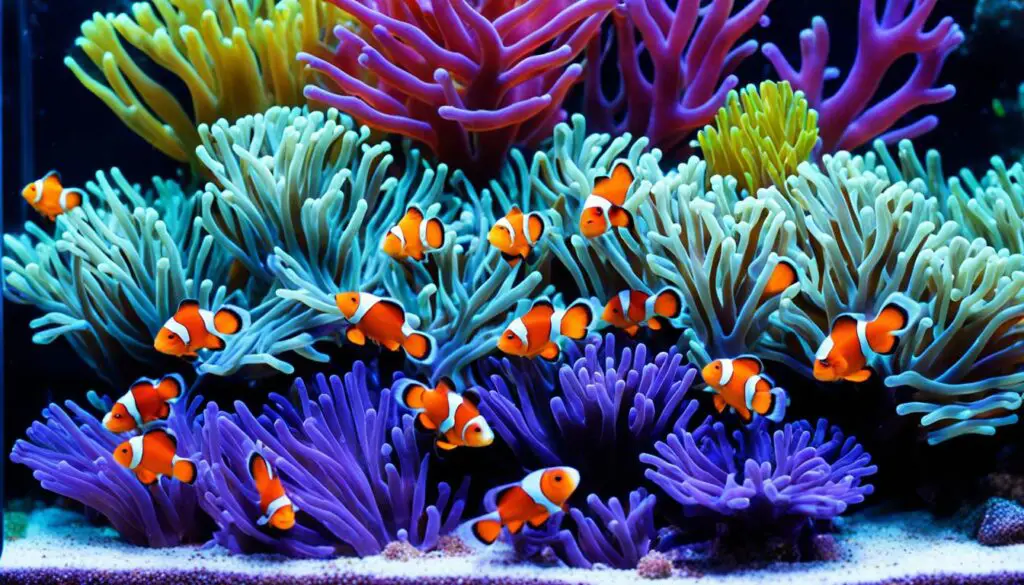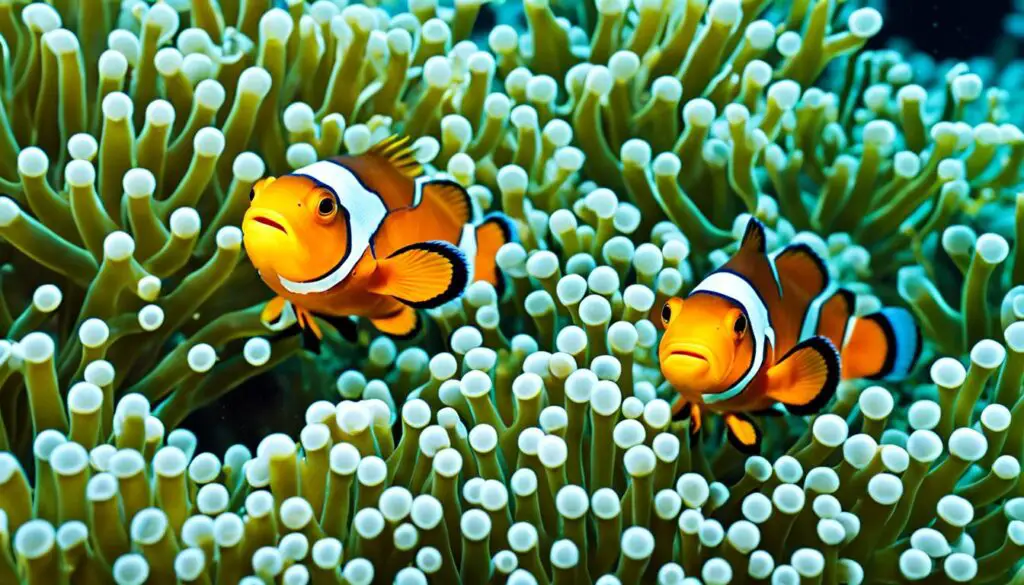Discover the Secrets of Nemo Fish: Ultimate Care Tips
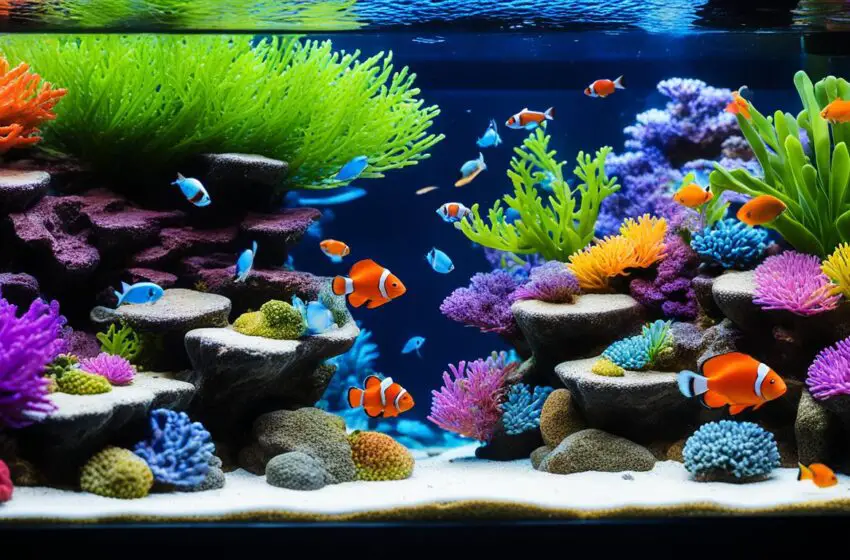
Clownfish, known as Nemo fish, are loved by many who keep aquariums. In this guide, we will share all you need to know about caring for them. You’ll learn about different clownfish types, what they need to live well, eat, breed, and general cares. This info will help you make a happy home for your Nemo fish in your tank.
Key Takeaways:
- Nemo fish, also known as clownfish, are popular and beloved marine creatures among aquarium enthusiasts.
- This complete guide will provide you with essential care tips and knowledge to create a thriving underwater habitat for your clownfish.
- Learn about the different species of clownfish, their habitat requirements, diet, reproduction, and care tips.
- Proper care and attention will ensure the health and happiness of your Nemo fish in the aquarium.
- Follow the guidelines in this guide to create a beautiful and enriching habitat for your clownfish.
Types and Characteristics of Clownfish
Clownfish come in many types, each with its own look and behavior. Knowing about these fish can guide your choice for a welcoming aquarium. It’s cool to learn about their unique traits and vibrant colors.
Here are two of the most famous clownfish types:
- Amphiprion percula (Orange Clownfish)
- Amphiprion ocellaris (False Clownfish)
The Orange Clownfish, on stage as Amphiprion percula, shines bright in orange with striking patterns. It’s known as Nemo thanks to the “Finding Nemo” movie. People love having it in their tanks because it’s so eye-catching.
Then there’s the False Clownfish, also called Amphiprion ocellaris. It looks like the Orange Clownfish but has its own charm. With colorful stripes and various color types, it wins hearts. This clownfish is tough and does well in tanks, whether you’re a newbie or an expert.
Clownfish are quite the oddballs – they can switch their gender. They live in groups where a big female is in charge. The biggest male is for making babies. The smaller guys help out but don’t breed.
In your tank, Clownfish bring color and life with their beautiful looks and fun ways. Their group life is a real show. Once you get to know them, caring for them is a real pleasure.
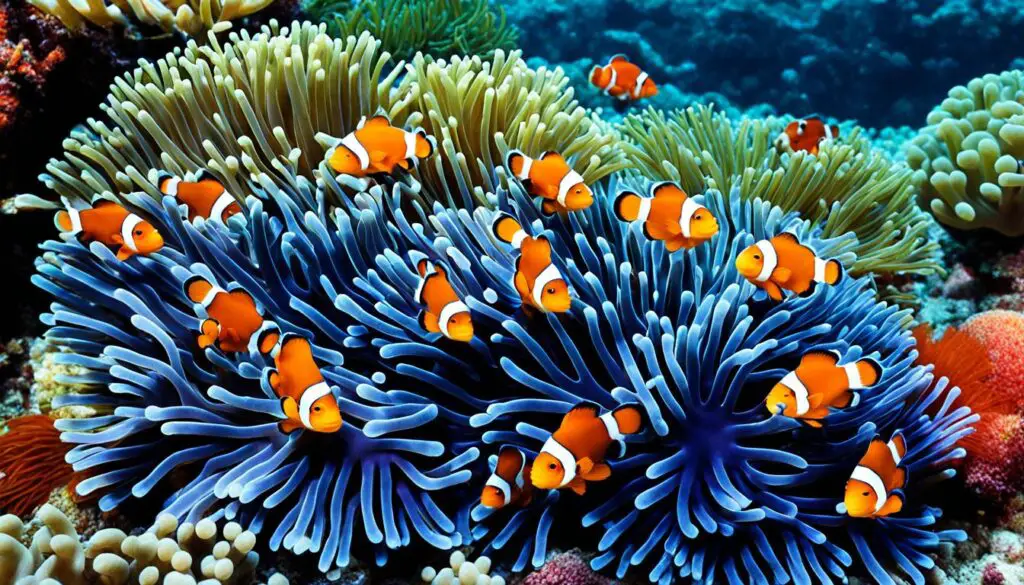
A Comparison of Clownfish Species
| Species | Coloration | Size | Behavior |
|---|---|---|---|
| Amphiprion percula | Orange with black and white markings | Up to 3.2 inches | Playful, territorial, and hierarchical |
| Amphiprion ocellaris | Orange and white stripes | Up to 4 inches | Social, adaptable, and resilient |
Creating the Ideal Environment for Clownfish
Creating the perfect home for clownfish is key to their health and long life. This means understanding their needs and providing the right environment. We’ll go through the essential steps to make their saltwater aquarium a great place for them.
Aquarium Setup
Start by setting up the aquarium. For one clownfish, aim for at least a 30-gallon tank. Add more gallons for each extra fish to give them space. It’s important to use a strong tank that can hold up in saltwater.
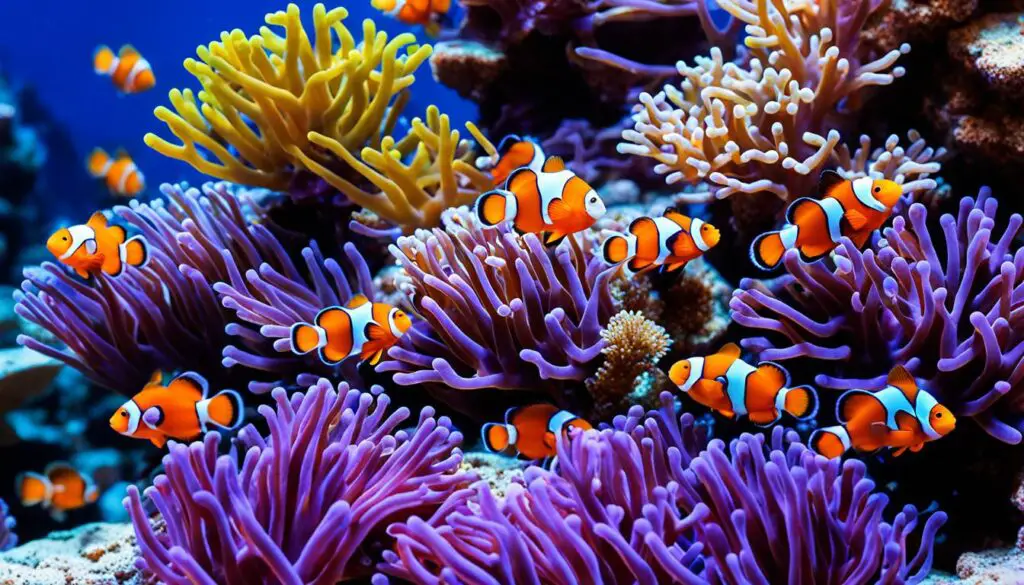
Water Conditions
Good water conditions are vital. Keep the temperature between 72°F and 82°F. The pH level should be between 8.1 and 8.4. Test the water often and adjust as needed to keep it just right for your clownfish.
Filtration
A proper filtration system is a must. It cleans the water by removing waste and toxins. Use mechanical, biological, and chemical filters for the best results. This helps keep your clownfish’s home clean and safe.
Lighting
Lighting is crucial for your aquarium and clownfish. They need it for their daily activities and to help beneficial algae grow. Use lights made for saltwater tanks to mimic natural sunlight. These lights also help your clownfish stay bright and healthy.
Tank Mates
Choosing the right friends for your clownfish matters a lot. They get along well with peaceful species like gobies, cardinalfish, and tangs. Stay away from fish that are mean or like to claim their territory. Always check if different fish can live together before adding them to your tank.
Setting up the perfect home for your clownfish is both fulfilling and ensures they are happy and healthy. Follow the advice on tank setup, water quality, filtration, lighting, and selecting tank mates. This will lead to a wonderful environment for your clownfish to enjoy life.
Feeding and Care Tips for Nemo Fish
Clownfish are not picky eaters. They will eat marine flakes, pellets, and frozen foods like shrimp. A varied diet keeps them healthy and bright. But, be sure not to give them too much food. Overfeeding can make them sick and harm the water.
Changing the water every week keeps your clownfish in good shape. A 10-25% water change is best to keep their home clean and safe. This simple step helps your Nemo fish thrive.
Testing the water often is also important. A testing kit lets you check for harmful levels of ammonia, nitrites, and more. Adjusting these to the right levels keeps your fish happy and stress-free.
Adding the right supplements to the water can make a big difference. They help keep the water’s minerals in balance. Use trusted brands and don’t overdo it. This way, your Nemo fish’s home will stay healthy.
FAQ
How many species of clownfish are there?
Various types of clownfish exist. These include the Orange Clownfish, called Amphiprion percula, and the False Clownfish, known as Amphiprion ocellaris.
What are the habitat requirements for clownfish?
Clownfish need a saltwater tank of at least 30 gallons. It also needs the right temperature, pH, good filtration, light, and water movement.
What should I consider when choosing tank mates for clownfish?
You should pick tank mates carefully. Make sure they get along and won’t bully or harm the clownfish.
What is a balanced diet for clownfish?
A good diet for clownfish includes marine flakes, pellets, and frozen foods. These can be brine shrimp and mysis shrimp.
How often should I perform water changes for my clownfish?
You should change 10-25% of the water each week. This keeps the water clean and the fish healthy.
How can I ensure optimal water conditions for my clownfish?
Test the water often and use the right supplements. This will create the best conditions for your clownfish.


